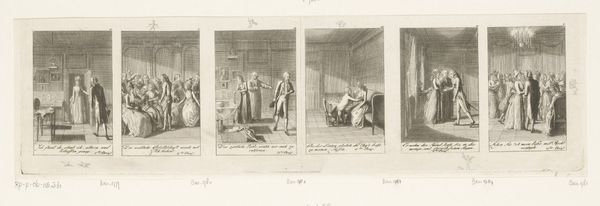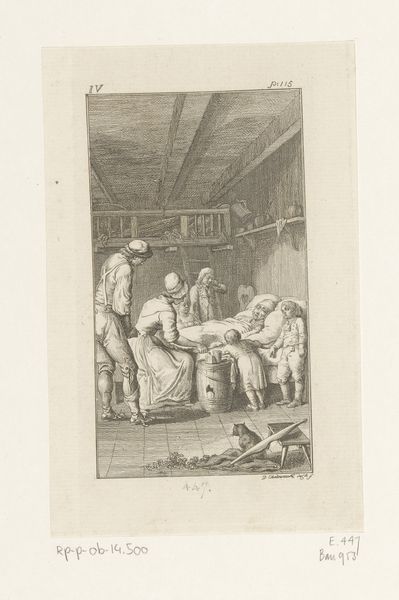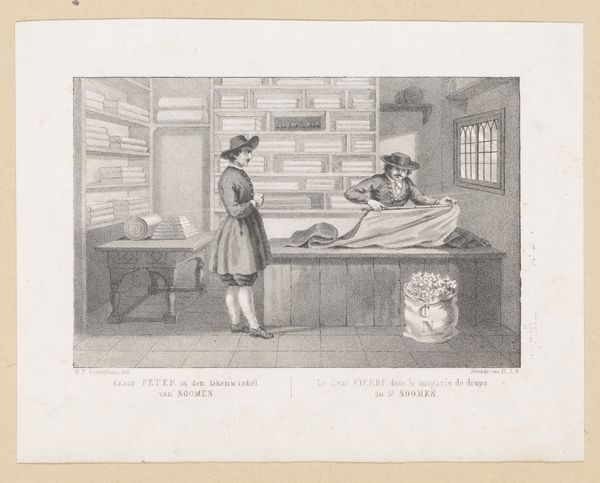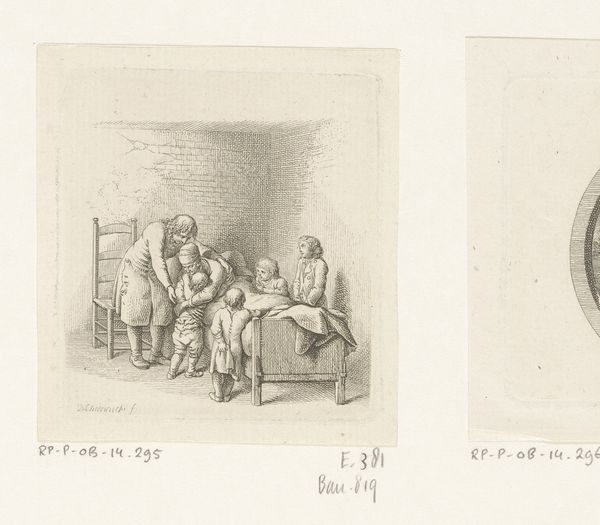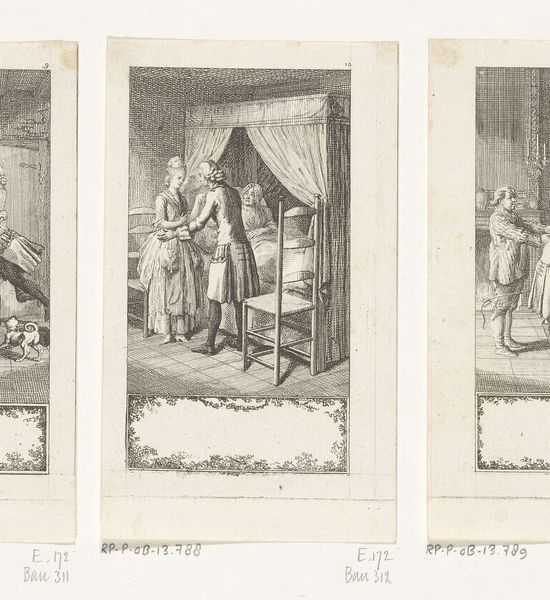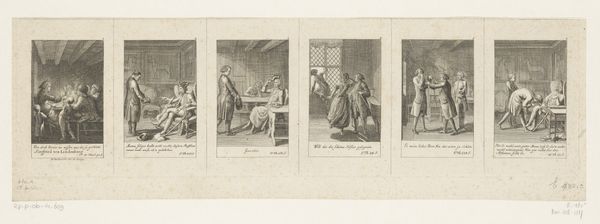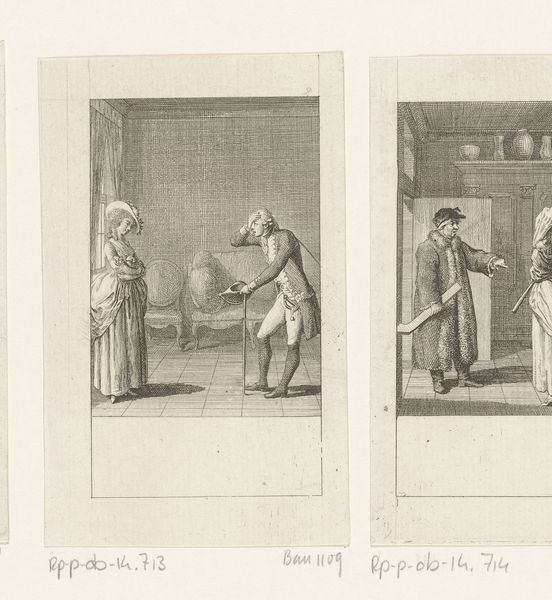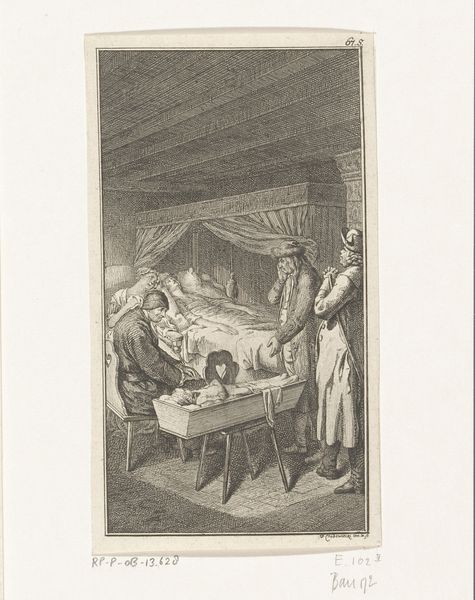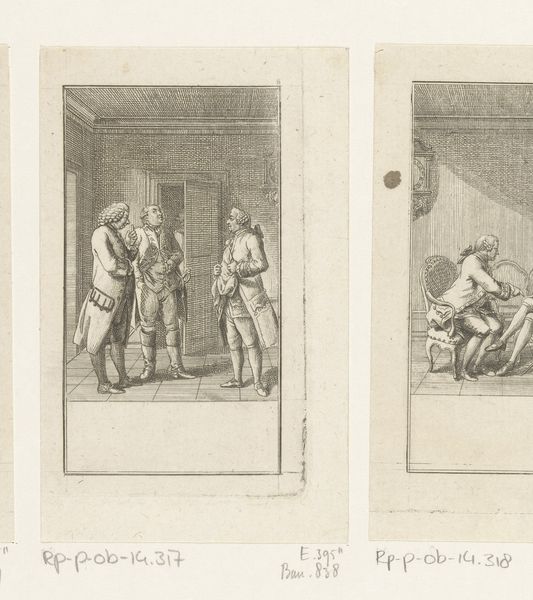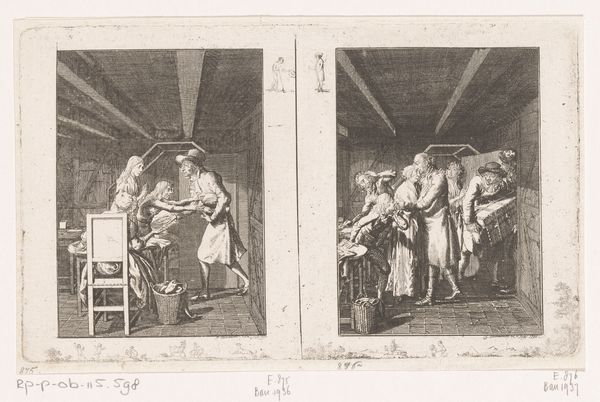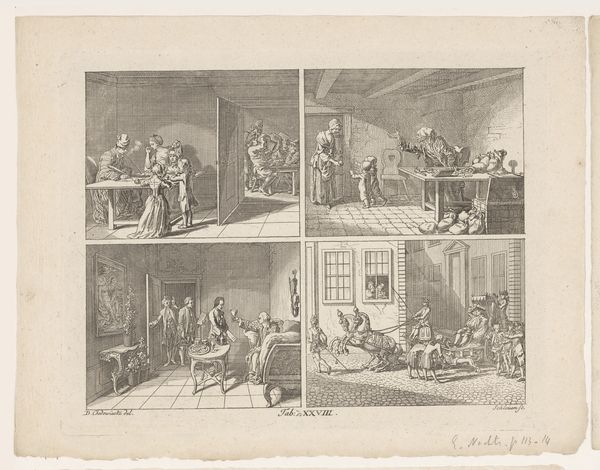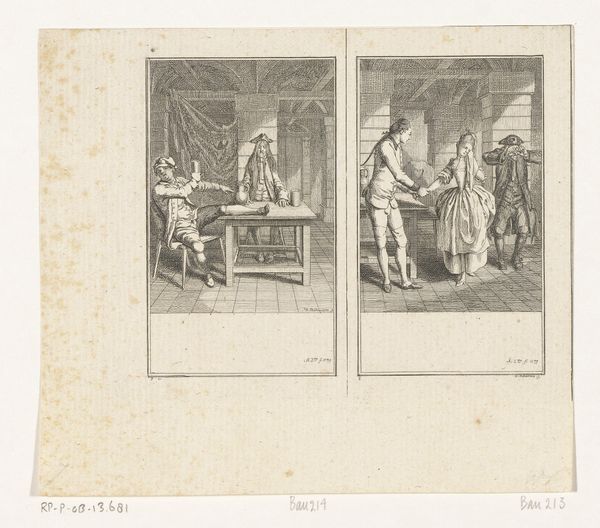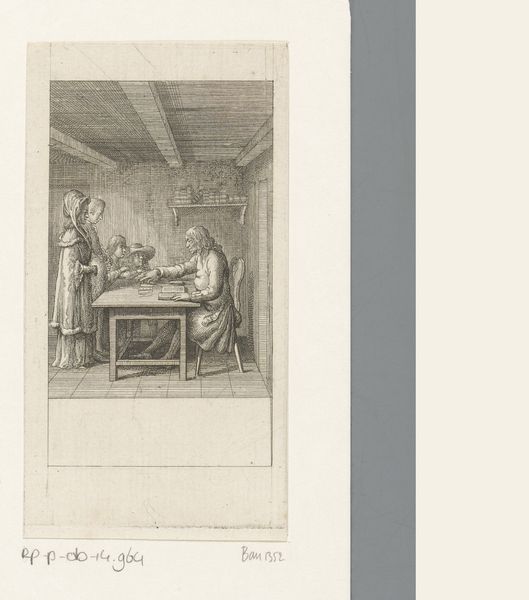
Dimensions: height 157 mm, width 213 mm
Copyright: Rijks Museum: Open Domain
Curator: Here we have Daniel Nikolaus Chodowiecki’s etching from 1779, "Mine op haar doodsbed," housed right here at the Rijksmuseum. Editor: It's...clinical, isn't it? The stark lines, the rigid framing of these two deathbed scenes, it’s unsettling in its detachment. Almost documentary. Curator: The documentary feel isn't accidental. Chodowiecki's artistic choices invite us to dissect 18th-century gender roles and familial structures within these intensely private moments. Editor: I notice that each scene uses light very purposefully. In the first panel, light emphasizes the connection between the dying woman and the man taking her pulse, while in the second the light streams in from a nearby window onto the preparations for burial, obscuring everyone’s face. Curator: Yes! Note how in the first scene, you have figures actively attending to the woman, the male doctor, perhaps her husband at the bedside, embodying patriarchal authority and control. Editor: The somber attire certainly points towards the seriousness of what is happening, especially the head coverings that signal grief, loss, and societal expectations for mourning. Look at the window reflecting on what seems like the mirror on the wall, adding depth and a sense of looking into a life already past. Curator: Absolutely. The visual language reinforces the marginalization of women, reduced to passive figures, defined solely by their domestic roles and then by death itself. The image really invites critical analysis of women’s limited agency in that era, even on their deathbeds. Editor: Perhaps, but it also highlights a certain reverence for life's cycle. Each panel represents a key part of the ritual of death: acceptance and remembrance. Even now these symbols touch deep cultural associations. Curator: I concede it captures those continuities, yet viewing art is inherently a dialogue. "Mine op haar doodsbed" functions as a testament to artistic practice's capacity to embody the nuances of its era. Editor: For me, beyond the specific context, it becomes a meditation on mortality and our collective history of coping with loss. Curator: Well said, that delicate balance certainly invites contemplation and continuous, crucial conversation.
Comments
No comments
Be the first to comment and join the conversation on the ultimate creative platform.
